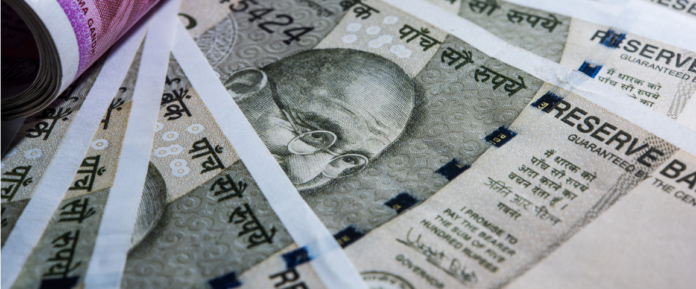
The Reserve Bank of India (RBI), India’s central bank, is expressing interest in introducing a rupee-backed digital currency, the Financial Times reports. The RBI is currently facing financial strain due to the complexities of managing paper currency, and has consequently formed an inter-departmental group to determine if a state-backed digital currency could cut down costs.
“In India, an inter-departmental group has been constituted by the Reserve Bank to study and provide guidance on the desirability and feasibility to introduce a central bank digital currency,” reads an excerpt from the Reserve Bank of India’s Annual report, published Wednesday. “(Globally) the rising costs of managing fiat paper/metallic money, have led central banks around the world to explore the option of introducing fiat digital currencies.”
To give you a better idea of the magnitude of these costs, the Financial times estimates that the RBI spent 6.3 billion rupees (~$86 billion) printing paper notes for the financial year of 2018.
India, at present, has some of the strictest federal regulations against cryptocurrency in the world. Largely due to pressure from the RBI, Indian lawmakers imposed a ban on cryptocurrency last month which barred financial institutions and regulated entities from participating in any crypto-related transactions. Much of Indian cryptocurrency trading is suspected to have since gone underground, with Indian investors continuing to trade crypto on black markets.
Interestingly, the RBI has become extremely active in the cryptospace since helping to institute the cryptocurrency ban. The RBI announced earlier this week that it had formed a research group which would focus on emerging technologies like cryptocurrency, blockchain and artificial intelligence. In addition to cutting costs, the RBI might now be recognizing the potential financial benefits of monopolizing India’s digital money economy.
“The idea of a central bank issued digital currency is very promising though issues around digital counterfeiting will need to be addressed,” said Mahesh Makhija, Partner Advisory, Financial Services, EY India.
India’s national currency would be backed by the Indian rupee, thereby functioning as a stable coin like Tether or TrueUSD. Similar nation-backed stablecoin projects are currently being attempted in Venezuela, and soon in Iran.
The Venezuelan Petro is supposed to be backed by the country’s oil and mineral reserves. However, under the weight of a crashing economy and a corrupt totalitarian government, the Petro has garnered little support.
Meanwhile, Iran’s national cryptocurrency is expected to launch within the coming months and is intended to help provide financial relief from US imposed sanctions. However, given the country’s struggling economy, Iran’s national cryptocurrency isn’t likely to draw much interest from outside investors.
Returning to India, the RBI’s recently-published annual report calls for a globally coordinated effort to prevent abuses in the digital money market, and concludes its discussion on cryptocurrency by emphasizing the RBI’s perceived need for an authorized central regulator:
“There is no established framework for recourse to customer problems/ disputes resolution as payments by cryptocurrencies take place on a peer-to-peer basis without an authorised central agency which regulates such payments. There exists a high possibility of its usage for illicit activities, including tax avoidance”.

Unhashed.com is author of this content, TheBitcoinNews.com is is not responsible for the content of external sites.
Our Social Networks: Facebook Instagram Pinterest Reddit Telegram Twitter Youtube










